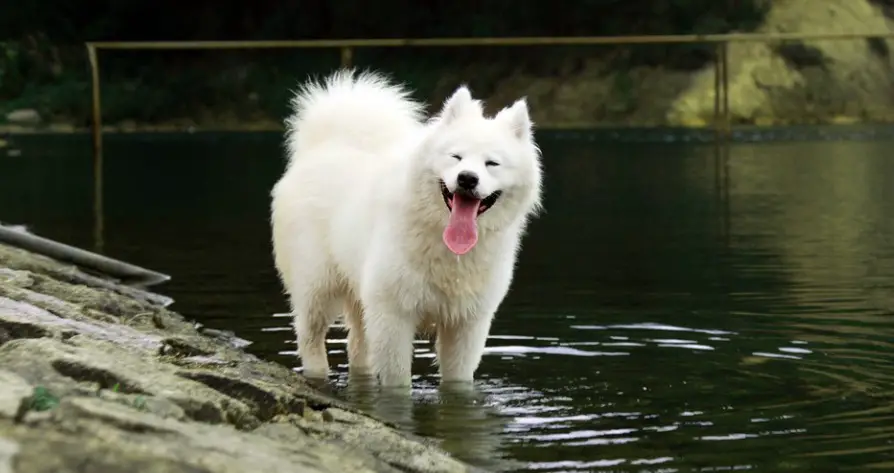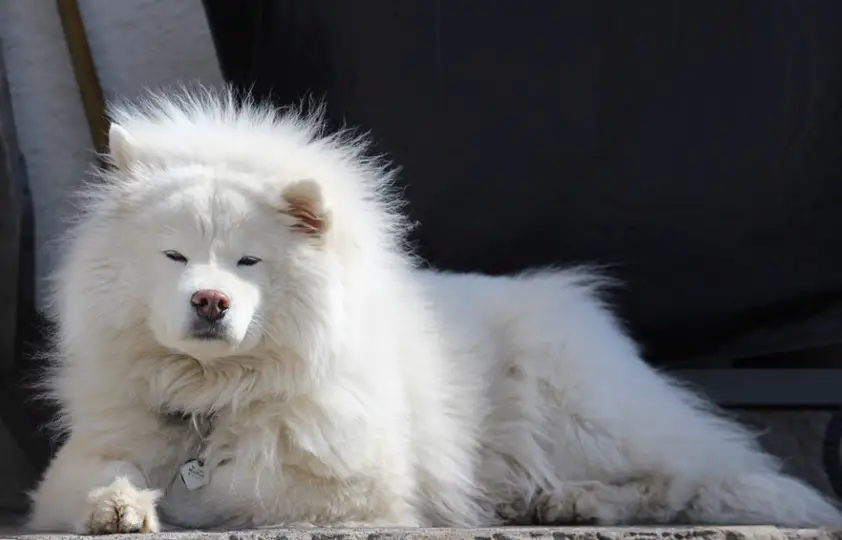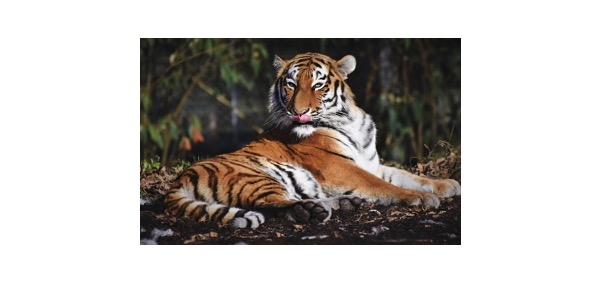Table of Contents
Samoyed: All You Need To Know
The Samoyed is a domesticated herding dog which belongs to the kingdom of Animalia, phylum Chordata, and class Mammalia. Its genus is Canis and its species is C. lupus. Its height is 48.3 to 59.7 cm and it weighs about 22.7 to 27.2 kg. It lives in the domesticated habitat, with a lifespan of 12 to 14 years.

Samoyed Description
The Samoyed is a working dog breed that was developed to pull sleds and herd animals in extreme temperatures. This dog originated in northern Russia and was named after the Siberian Samoyedic peoples with whom it collaborated. These dogs shared their tents and worked closely with the community, so they have a strong affinity for family life.

Samoyeds are a medium-sized dog of Nordic ancestry. It is a Spitz breed with upright pricked ears and a tail that curls over its back, among other features. They have a medium-length double-layered coat that is white in hue. Their garment protects them from the elements and allows them to operate in temperatures as low as – 60 degrees Celsius!
Samoyeds are known for their large, flat feet with fur between the toes and on the pads, which make them ideal for extremely cold temperatures. Their feet are similar to snowshoes, allowing the dogs to roam about freely. The fur on their feet also keeps snow from sticking to them and obstructing their ability to operate.

These dogs have also been employed by explorers in addition to herding animals. These canines accompanied explorers to the arctic regions in the early 1900s. Many of the dogs came home with the explorers when the trips were over.
Mr. and Mrs. Kilburn-Scott, for example, were the first to introduce the Samoyed to the United Kingdom after seeing them in their homeland in 1889. They immediately became well-liked members of the home, and they remain so to this day.
Samoyeds have a strong personality that can make training tough. They require a lot of exercise since they are sociable, lively, and have boundless energy. These dogs are recognised for their gentleness and their ability to get along with youngsters, making them ideal as a family companion.
Samoyeds have a high-pitched bark that may be obnoxious. They’re also a lot of fun to be around. These dogs should never be left alone for extended periods of time outside.
Fun Facts About Samoyed!
The personality of this fluffy dog is as enormous as its hair, and it makes a wonderful companion for someone who can handle a powerful dog. Samoyeds, known for their friendly demeanour, are an old dog breed that has assisted communities in herding livestock and pulling sleds for generations. Their biochemistry has made them well-suited to living in the cold. Let’s have a look at a few of the interesting facts about these pets.

Samoyed is a Ancient Dog Breed
The Samoyed dog breed is one of 14 historic dog breeds that originated in Siberia around 3,000 years ago. Their genetic imprint is more similar to that of wolves than that of other canine species.
The nomadic Samoyedic peoples of Siberia gave this breed its name because they employed it to herd reindeer, hunt, and tow sleds. DNA tests reveal that the Samoyed, along with 13 other dog species, is the oldest of all dogs, having the fewest genetic changes from wolves.
Early Asian pariah dogs are said to have descended from grey wolves. The pariah dogs eventually moved to Africa and the Arctic with nomadic human tribes. The Middle East, China, Tibet, Japan, Central Africa, and the Arctic are home to fourteen ancient breeds. They are as follows:
1. Basenji (Central Africa)
2. Afghan and Saluki (Middle East)
3. Lhasa Apso and the Tibetan Terrier (Tibet)
4. Chow Chow, Pekingnese, Shar-Pei, and Shi Tzu (China)
5. Akita and Shibu Inu (Japan)
6. Alaskan Malamute, Samoyed, and the Siberian Husky (the Arctic)
Samoyed are Odorless Dogs
While some dogs have an unpleasant stench, Samoyeds are recognised for being odourless and require very little bathing provided their grooming is kept up to a good level. This is a good feature for individuals who don’t want their house to smell like a dog.
The Samoyed has a thick and warm double coat. Its coat is white, cream, or white with light brown accents, with a silver sheen at the tips of the outer hair. The exterior coat of the samoyed is lengthy and coarse. The coat sticks out from the rest of the animal, giving it a large, fluffy look.
The undercoat is composed of wool and may be worn as a layering piece. The wool is not shorn like sheep’s wool; instead, it is gathered when the Samoyeds shed and spun into fabric, which may then be woven or knitted. Females shed twice a year on average, whereas men only shed once.
When these canines shed, they shed their whole coat, which means there is a lot of hair everywhere. This is just a problem for a short period, since once the shedding is complete and the new coat has grown, they shed very little.
Pack Living
Samoyeds have preserved some of the traits of wild dogs, such as wolves, and as a result, they are naturally pack animals. This indicates that these dogs do not perform well on their own. These dogs, being pack animals, need to know who the alpha dog is in order to have a leader. To avoid issues at home, these canines must acknowledge their humans as the alpha dog, or pack leader, in order to remain submissive.
Samoyed Citations
- Mode of inheritance of Samoyed hereditary glomerulopathy: an animal model for hereditary nephritis in humans. J Lab Clin Med . 1986 Jun;107(6):551-5.
- An autosomal recessive mutation in SCL24A4 causing enamel hypoplasia in Samoyed and its relationship to breed-wide genetic diversity. Canine Genet Epidemiol . 2017 Nov 22;4:11.
- Letter to the editor regarding an autosomal recessive mutation in SCL24A4 causing enamel hypoplasia in Samoyed and its relationship to breed-wide genetic diversity. Canine Genet Epidemiol . 2018 May 1;5:4.







